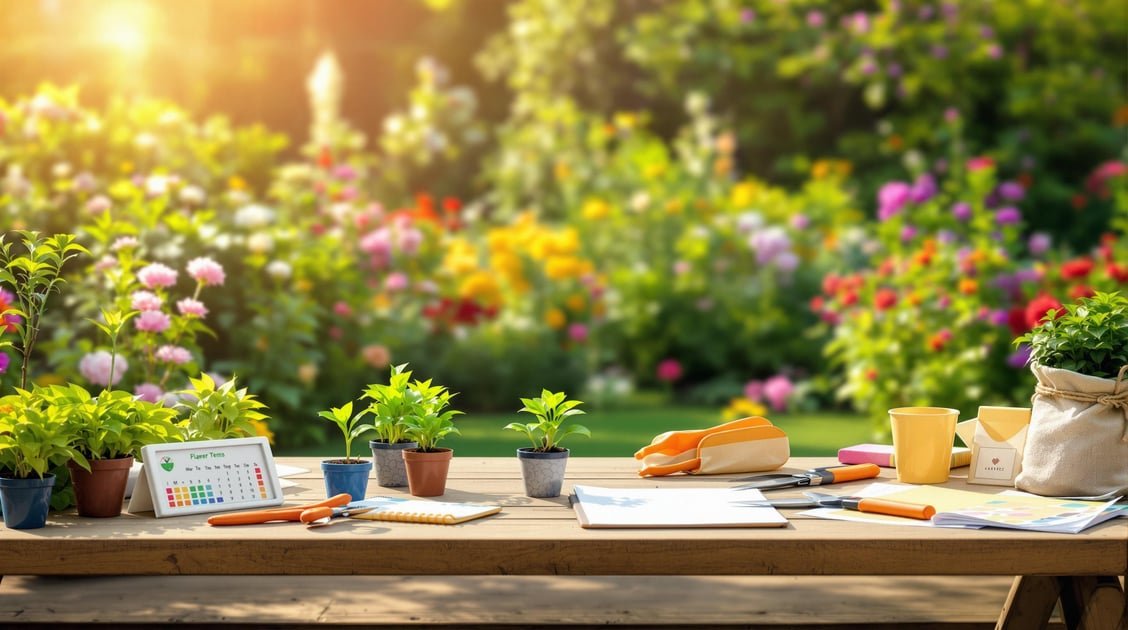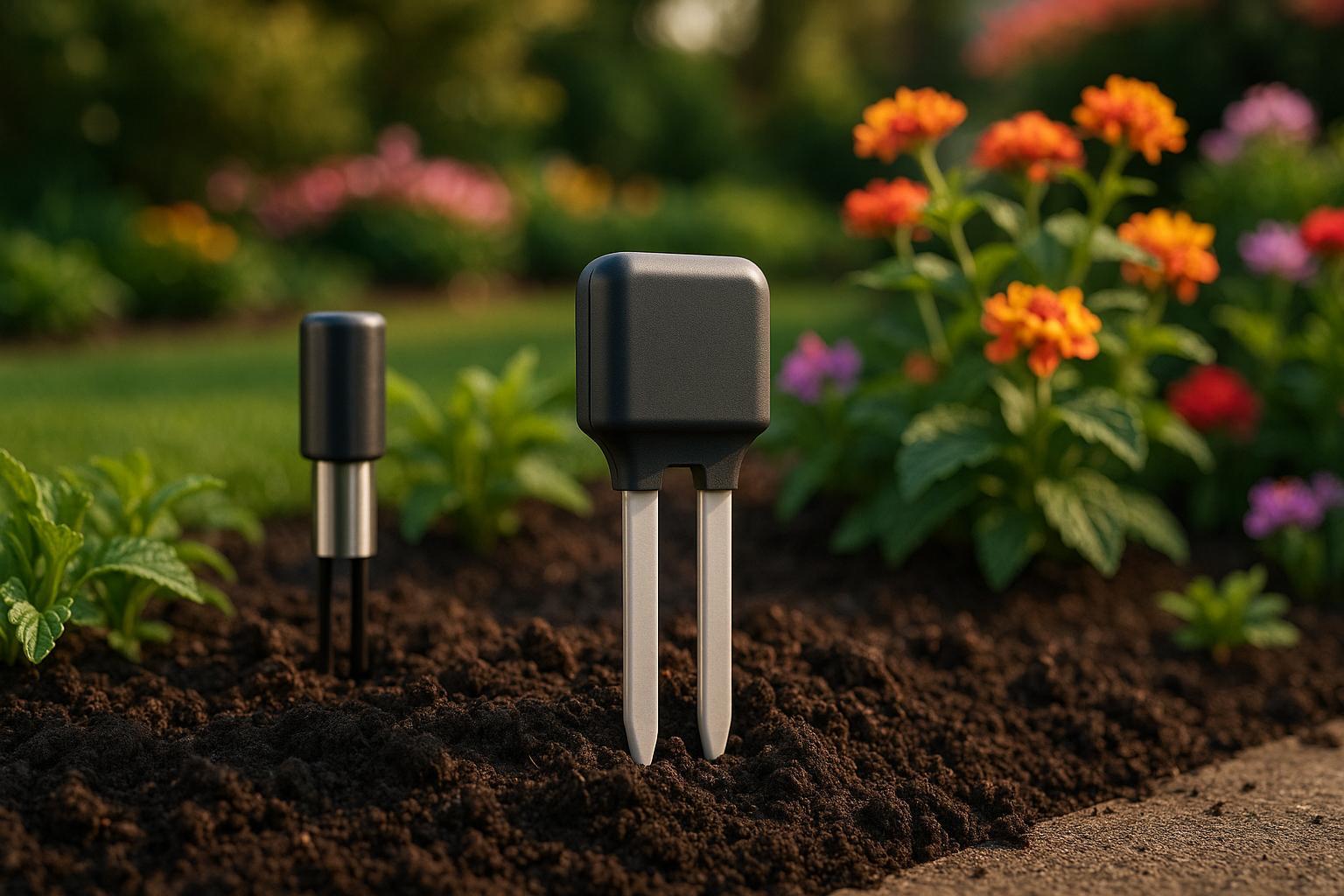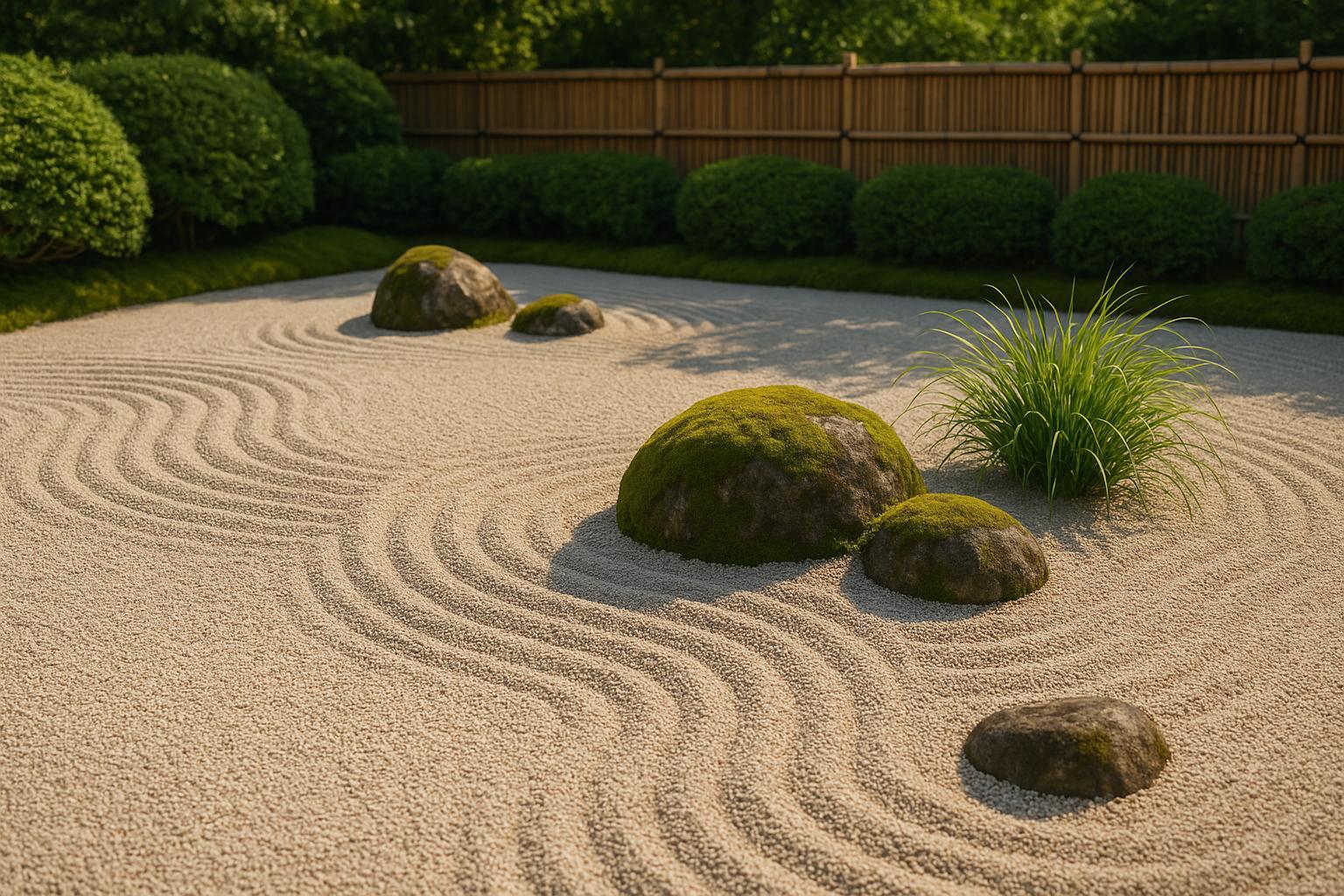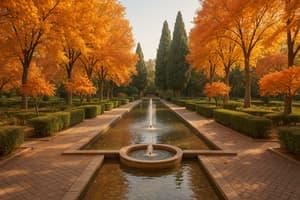Spring Garden Planning Checklist: Essential Steps for Success

Transform your garden into a thriving space this spring with these simple steps:
- Start Early: Begin seeds indoors to extend your growing season and get a head start.
- Assess Your Garden: Map sunlight, test soil, and identify your USDA zone to choose the right plants.
- Prepare Tools: Clean, sharpen, and replace any worn-out tools. Check and repair watering systems.
- Plan Your Layout: Sketch your garden, consider light exposure, and choose plants suited to your zone.
- Improve Soil: Test soil pH and nutrient levels, then add compost or amendments to boost health.
- Set a Schedule: Plan monthly tasks like planting, pruning, and pest control to stay organized.
How to Plan Your Spring Garden: Easy Step-by-Step Guide for ...

Check Your Garden Site Conditions
Understanding your garden's specific conditions is key to choosing plants that will thrive. Here's a step-by-step guide to help you assess your site.
Map Sun, Shade, and Soil Areas
Creating a sun map helps you figure out how much light different parts of your garden get. Start by sketching your property layout, including things like buildings, trees, and pathways.
Here’s how to do it:
- Record Sun Exposure: Take photos of your garden every 2–3 hours from sunrise to sunset. Make sure to note the time on each photo.
- Track Light Patterns: Identify areas with full sun (6+ hours), partial sun (4–6 hours), and shade (less than 4 hours).
- Mark Sunlight Zones: Use colors on your map - yellow for full sun, orange for partial sun, and blue for shaded areas.
Find Your USDA Zone
The USDA Plant Hardiness Zone Map (2023 edition) uses data from over 13,000 weather stations to help you identify your zone. Each zone is based on a 10°F temperature range, with smaller 5°F subzones for even more precision. Knowing your zone ensures you choose plants suited to your climate.
Look Up Local Frost Dates
Frost dates are crucial for timing your planting. These dates indicate the average last frost in spring and the first frost in fall, helping you avoid potential damage to your plants. Use this information to:
- Plan when to start seeds indoors, transplant outdoors, and harvest in the fall.
- Prepare for unexpected cold spells by monitoring forecasts and protecting plants when needed.
Keep in mind, frost dates are averages, so staying alert to local weather updates is always a good idea.
Get Your Garden Tools Ready
Once you've evaluated your garden site, it's time to prepare your tools and supplies. Getting everything ready now will save you time and hassle when spring arrives.
Maintain Garden Tools
Start by inspecting your tools. Rinse off dirt with water and scrub away any stubborn soil. If your tools have come into contact with diseased plants, soak them in a sanitizing solution made of 2 cups of bleach per gallon of water for 10 minutes.
To keep your tools in good shape and prevent rust:
- Use steel wool or fine sandpaper to remove rust.
- Apply a thin layer of boiled linseed oil to metal parts.
- Sand wooden handles and treat them with boiled linseed oil.
- Sharpen blades with a mill file, following the original bevel angle.
Once maintenance is complete, check for any tools that need replacing and invest in durable replacements.
Buy Garden Supplies
Take stock of your gardening tools and replace anything that's worn out. Here's a quick guide to essential items and price ranges:
| Tool Category | Essential Items | Price Range |
|---|---|---|
| Hand Tools | Pruning shears, shovel, hori-hori knife | $65, $20, $35 |
| Watering Equipment | Garden hose, sprinkler, watering can | $20-$50 |
| Soil Working | Hand rake, trowel, cultivator | $8-$25 |
| Protection | Gloves (3-pack), sturdy pants | $6, $90 |
| Comfort Items | Kneeler, garden tub, trug | $50, $13 |
It's worth spending a bit more on high-quality pruners and loppers. Look for ergonomic designs with grips that fit your hand comfortably.
Check Watering Systems
Make sure your watering systems are ready to go:
- Inspect hoses for leaks and check fittings.
- Clean and test sprinkler heads for proper spray patterns.
- Replace worn washers and repair any damaged connections.
- Adjust timer settings to match your spring watering needs.
For drip irrigation systems, flush the lines to remove mineral buildup and check for freeze damage. Replace any broken parts before the growing season starts.
Having well-maintained tools and updated supplies will make it easier to bring your garden plans to life.
sbb-itb-4d6a8dd
🚀 Ready to Reinvent Your Garden?
Join thousands of homeowners who have transformed their gardens using our AI design tool. Upload one photo to explore endless possibilities.
Get your AI garden designs →Design Your Garden Layout
With your tools ready and site conditions mapped out, it's time to plan your garden layout. A well-thought-out design makes the most of your space and ensures the best growing conditions for your plants.
Draw Your Garden Plan
Start by sketching your garden layout on graph paper or using digital tools. Be sure to include:
- Fixed features: Note permanent structures like fences, trees, or buildings.
- Light patterns: Use your sun map to track light exposure.
- Growing spaces: Mark areas for beds, containers, and pathways.
- Measurements: Add dimensions to maintain proper spacing and avoid overcrowding.
For accuracy, orient your plan with north at the top to align with sunlight patterns.
Pick Plants for Your Zone
When selecting plants, consider the following:
| Criteria | Guidelines |
|---|---|
| USDA Zone | Choose plants suited to your zone. |
| Soil Type | Match plants to your soil's texture and pH. |
| Sun Exposure | Ensure plants align with light levels. |
| Mature Size | Account for their full growth spread. |
| Maintenance | Pick plants that fit your time and effort. |
"Plant selection is a critical step in creating a thriving garden or landscape. Choosing the right plants for your space can enhance the beauty, functionality, and sustainability of your garden." - Gardenia.net
Digital tools can provide tailored recommendations to refine your plant choices.
Use AIGardenPlanner Tools

Your site assessments can be enhanced with AIGardenPlanner, which offers:
1. Photo-Based Design
Upload a photo of your garden, and the AI generates design ideas in over 50 styles.
2. Plant Advisor
Get personalized plant suggestions based on:
- Local climate
- Garden conditions
- Personal preferences
- Maintenance needs
3. Growing Guides
Access detailed care instructions, including:
- Planting schedules
- Spacing guidelines
- Watering needs
- Ongoing care tips
The AI Plant Advisor offers custom garden plans starting at $15 for a basic package. For more extensive needs, monthly subscriptions are available. Each plan includes specific plant suggestions and step-by-step growing guides to help your garden thrive.
Improve Your Soil
Healthy soil is the backbone of a thriving spring garden. Before planting, take some time to assess and improve it.
Test and Fix Soil Problems
Getting your soil professionally tested can provide accurate details about its health and growing conditions. Many county extension offices offer this service, often at little to no cost.
Here’s how to get reliable results:
- Collect 8–10 soil samples from random spots in your garden. Avoid areas recently treated with fertilizer, manure, ash, or burned brush.
- Combine the samples in a clean container and let them dry completely before sending them to the lab.
The test results will give you information about:
- pH levels
- Nutrient content
- Soil texture
- Specific recommendations for improvements
| Soil Component | Ideal Range | Common Fixes |
|---|---|---|
| pH Level | 6.0–6.5 | Use lime to raise or sulfur to lower pH |
| Clay Content | 20% | Add compost or aged manure for better drainage |
| Sand Content | 40% | Add organic matter to hold more water |
| Silt Content | 40% | Mix in compost to improve structure |
Once you have a clear understanding of your soil’s makeup, you’re ready to prepare your planting areas.
Set Up Garden Beds
After testing and understanding your soil, it’s time to prepare your garden beds. Follow these steps for better results:
-
Clear and Prepare the Site
Remove debris and till the soil to a depth of 8–12 inches. This helps improve root growth, water absorption, and nutrient uptake. -
Add Organic Matter
Spread a 2–4 inch layer of high-quality organic material like aged compost, well-rotted manure, leaf mold, or coconut coir. -
Incorporate Amendments
Mix the organic matter into the top 6–8 inches of soil. Depending on your soil type, consider these amendments:Soil Type Recommended Amendments Clay Compost and aged manure for better drainage Sandy Organic matter to improve water retention Silty Compost to enhance structure
After mixing in amendments, protect your soil by adding mulch.
"The best way to make poor soil into perfect soil is to add nutrient-rich organic matter such as compost, aged manure, or leaf mold." - Catherine Boeckmann
Finish by applying a 2–3 inch layer of mulch. This helps retain moisture, prevent weeds, regulate temperature, and reduce compaction.
Make Your Spring Garden Timeline
Now that your garden is ready, it's time to map out a schedule for your spring tasks. A well-organized timeline helps keep your garden on track for success.
Plan Monthly Garden Tasks
Break down your spring gardening chores by month, considering your local climate and frost dates.
-
March Tasks:
- Enrich garden beds with organic fertilizer
- Turn over the soil and mix in compost
- Inspect and fix irrigation systems
- Add mulch to retain moisture
- Plant cold-hardy vegetables once the frost risk is gone
-
April Tasks:
- Prune perennials to encourage growth
- Start planting warm-season vegetables
- Direct-sow crops like beans, corn, and cucumbers
- Use natural methods to control pests
- Add summer annuals to your garden
-
May Tasks:
- Plant heat-loving vegetables
- Trim spring-flowering shrubs after they bloom
- Introduce helpful insects to manage pests
- Begin harvesting early crops
- Adjust your watering schedule as temperatures rise
Rotate Vegetable Plantings
Crop rotation is key to keeping soil healthy and reducing pest issues. Here's a simple guide:
| Plant Group | Examples | Follow with |
|---|---|---|
| Leafy Greens | Lettuce, Spinach, Kale | Legumes |
| Legumes | Peas, Beans | Root Vegetables |
| Root Vegetables | Carrots, Beets | Fruiting Plants |
| Fruiting Plants | Tomatoes, Peppers | Leafy Greens |
Track Garden Maintenance
Stay on top of garden care with tools like AIGardenPlanner's AI Plant Advisor. This platform creates tailored care schedules based on your plants and location. It can help you:
- Monitor watering needs with weather-based reminders
- Schedule fertilization at the right growth stages
- Keep track of pest control efforts
- Record harvest dates and yields
- Plan for future improvements in your garden
Make it a habit to update your timeline weekly, adjusting for weather changes and the growth of your plants.
Conclusion
Starting a thriving spring garden begins with thoughtful preparation and having the right tools to bring your ideas to life. By sticking to the steps outlined earlier, you’ve set yourself up for a productive and rewarding growing season.
Take your planning further with AIGardenPlanner's smart tools. Its AI-driven features provide customized garden plans based on your location and climate, making it easier to design a garden that fits your needs.
Stay on top of your goals with AIGardenPlanner's built-in organization tools. Whether you're just starting out or have years of experience, these features simplify the process, allowing you to focus on growing a vibrant spring garden.
🎨 Visualize Your Dream Garden Today!
Transform any outdoor space into a professional landscape design in minutes. Just upload a photo, choose your style, and let our AI do the rest.
Start your garden transformation now →Related posts
Related Articles

5 Solutions for Common Garden Design Challenges
Explore innovative solutions for common garden design challenges, from vertical gardens to AI-driven soil improvements and weather-smart planning.

Ultimate Guide to Durable Sensor Materials for Gardens
Explore durable sensor materials for gardens that enhance performance, save costs, and improve water management for thriving plants.

Ultimate Guide to Weed Control in Zen Gardens
Learn effective strategies for keeping your Zen garden weed-free through natural methods, thoughtful design, and consistent maintenance.

How Persian Gardens Adapt to Seasonal Changes
Explore how Persian gardens ingeniously adapt to seasonal changes through smart design, plant selection, and water features for year-round beauty.

Ultimate Guide to Using Pine Shavings in Your Vegetable Garden
Discover the benefits of using pine shavings in your vegetable garden, considerations to keep in mind, and expert tips for maintaining a healthy garden. Explore how pine shavings can improve soil aeration, drainage, and more!

How AI Adjusts Garden Styles Instantly
Unlock the power of AI in garden design with instant customization, eco-friendly plant suggestions, and professional-quality layouts tailored to your space.